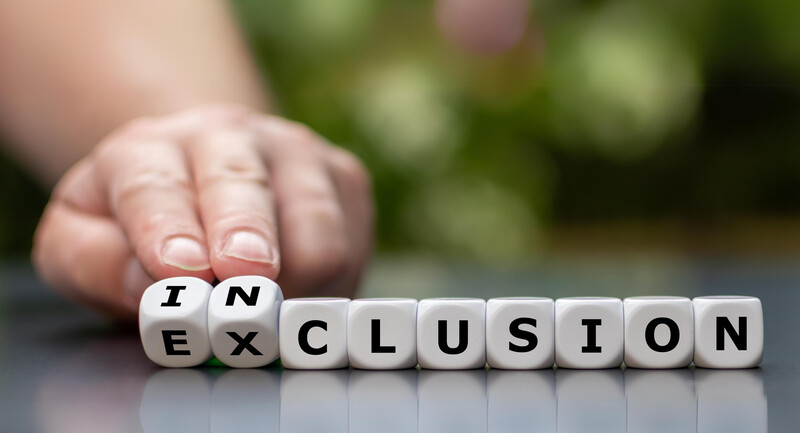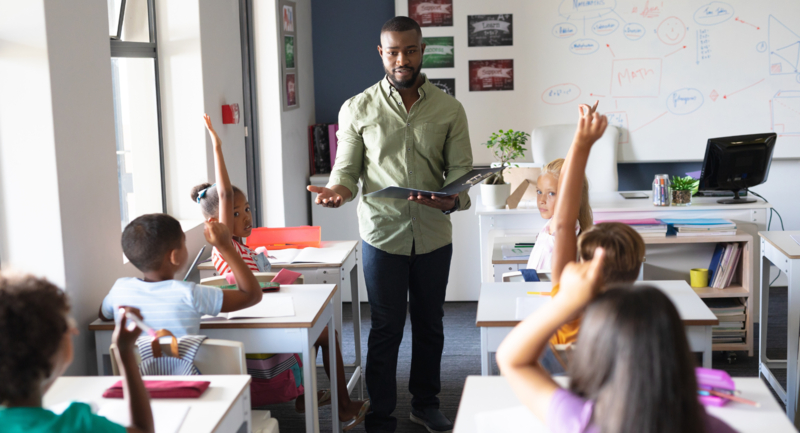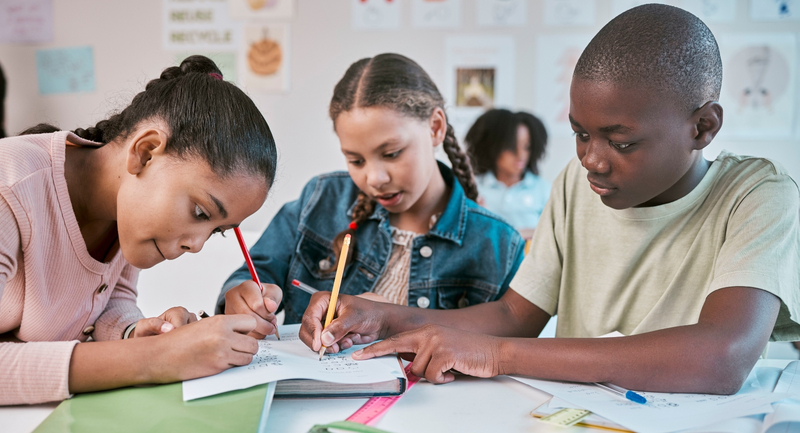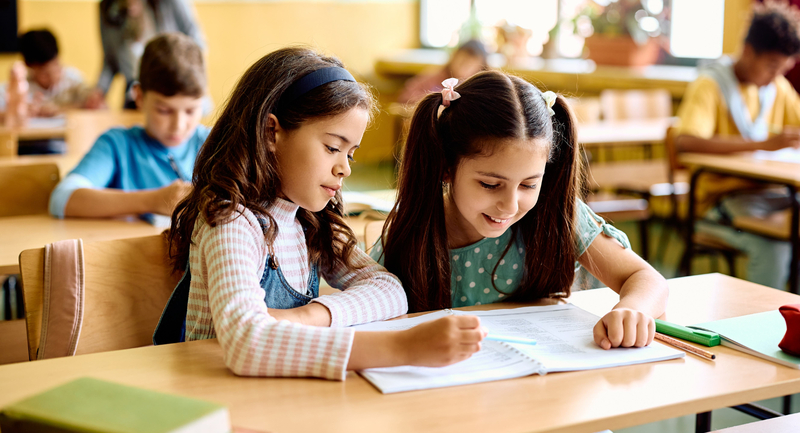Inclusion, we have a problem.
Whether we’re talking about people or our education systems, the kind of transformation that true inclusion requires can only be achieved from the inside out. Unfortunately, much of our thinking and most of our systems are rooted in an antiquated approach to perceiving disabilities that doesn’t actually line up with inclusivity. In fact, once we understand the mismatch, the seemingly endless work of advocating and striving for inclusivity makes a lot more sense. Even better, once we see how the way we think about disabilities is misaligned with inclusion, we can begin to address this problem.
Creating inclusive classrooms goes beyond believing that students with disabilities are entitled to everything their general education peers receive. They are! It goes beyond “every child can learn.” They can! It’s about how we conceptualize disability, and whose responsibility it is to construct an inclusive world. Our classrooms are real, concrete places where how we think about disability is both at the heart of the problem with achieving inclusion and instrumental to the solution.
Moving Beyond the Medical Model
In education, we have built systems to “help” or “fix” disabled students. We closely evaluate and identify the child’s problem and then we create interventions and programs squarely focused on remediating those deficits. This narrow, rigid lens prevents us from seeing the big picture. Inclusion isn’t about finding ways to help students better fit into existing environments. It is more than making accommodations for improved access. It goes beyond compassion or tolerance. Inclusion is about each person’s inalienable right to be part of their community, to be part of our global community. And, as it is a right we all share, it is a responsibility we all share. Inclusion is everyone’s job.
Inclusion isn’t about finding ways to help students better fit into existing environments. It is more than making accommodations for improved access.
If we examine disability history, we have to travel hundreds of years in the past to find when our misaligned approach took root. It was during the Renaissance and the Age of Enlightenment that perceptions of people with disabilities began to shift away from a religious lens toward a medical one. As the Scientific Revolution informed people’s worldviews, disabilities began to be understood as problems (i.e. "diseases") that experts in science and medicine could identify, treat, and cure. Over centuries, this medical mindset became the default foundation that many of our systems are based on, including education. Herein lies the quagmire. The medical mindset, or medical model, is fundamentally flawed as a foundation for inclusivity.
What is the medical model? The medical model is a framework that views disability as a deficiency that is inherent to the individual. A person with a disability is someone with a physical, mental, or emotional problem that causes barriers between them and their environment. Because of the person’s problem, they need to be helped or fixed so that they can better fit into the world around them—the “normal” or “regular” world.
Once we recognize that we are viewing disability through a medical lens, we can ask the obvious question: Is there another way to view disabilities? The answer is a resounding, “Yes!” There are actually many models of disability. As educators, once we understand how our systems, specifically, special education, have been built on the medical model, we can begin to see the influence more clearly—an important step toward considering the alternatives.
Shifting to the Social Model
The social model of disability understands disability as “the outcome of the interaction between individuals with a health condition (e.g. cerebral palsy, Down syndrome, or depression) and personal and environmental factors (e.g. negative attitudes, inaccessible transportation and public buildings, and limited social supports)” (World Health Organization).
The social model guides us to separate impairment from disability. People have impairments. The social model helps us to see that disability is about impact, and impact is about interaction. A child with dyslexia has an impairment that affects their ability to read. But the extent to which that impairment constitutes a disability depends on environmental factors like the available technology in the classroom or the teacher’s knowledge of ways to help a reader with dyslexia access content. Disability is a function of both impairment and environmental conditions. We can modify environmental factors to lessen or intensify how much a child’s impairment is experienced as a disability in the classroom.
We can modify environmental factors to lessen or intensify how much a child’s impairment is experienced as a disability in the classroom.
Ironically, this is just what the law of special education requires. The Individuals with Disabilities Act (IDEA), the law that governs special education, states, “To the maximum extent appropriate, children with disabilities…are educated with children who are nondisabled; and… removal of children with disabilities from the regular educational environment occurs only if the nature or severity of the disability is such that education in regular classes with the use of supplementary aids and services cannot be achieved satisfactorily.”
What does this mean? It means the conversation that IEP teams, including parents, should be having is how to make the education environment accessible and appropriate for the special education learner, not whether the child is demonstrating pre-determined readiness to be successful in the “regular classroom.”
Reframe Variability
A key aspect of the social model involves normalizing variability. Different doesn't mean better or worse. Variability of all abilities is part of the human condition and our own variabilities change throughout our lifetimes. In the social model, people are not defined by any one aspect of their humanity, including impairments.
Easier said than done? No question—shifting a paradigm is complicated. Yet, history is filled with examples of differences that we now accept as part of human variability. Consider that well through the 20th century, left-handed students often faced both discrimination and significant challenges in the classroom. As one researcher wrote in 1996, “No child should be made to feel that he is abnormal because he uses his left hand.”
Over time, though, our thinking has evolved, and so has the experience of being a lefty. Though challenges may remain, tools and technology have changed the way lefties experience school. Left-handed scissors, for example, can be found on Amazon.com for less than $10.00, and, most importantly, we have shifted away from the notion that children need to be "cured" of being left-handed.
We can mirror this progression in our thinking around all kinds of variability. When we do, we can change the frame around the discussion of who belongs in the general education classroom. Everyone belongs!
Rethink Design
Frameworks like Universal Design for Learning (UDL) can help us shift our practice from a medical model to a social model. According to authors Anne Meyer and David Rose, who first introduced the principles of UDL in the 1990s, “In a well-designed learning environment, systematic variability is planned for from the very beginning, and diversity is expected, appreciated, and developed” and “When students encounter difficulty, the curriculum—not the student—is assumed to be inadequate to meet the varied and diverse needs of learners."
In special education, understanding disability in relation to the demands and design of a student’s environment opens important planning conversations for IEP teams. Instead of asking which environment the student “belongs in,” educators, leaders, teachers, and parents can take ownership of determining the supports and services a child needs to best leverage what works for that student. In this way, the social model moves us from a deficit approach to a strength-based approach. The goal becomes minimizing the impact of the child’s impairment while maximizing access and opportunity for learning in any environment.
The social model moves us from a deficit approach to a strength-based approach.
What Educators Can Do
There are a number of things teachers and leaders can do right now to start shifting toward a social model of disability:
1) Learn more about the social model. Share your learning with colleagues, students and families, and friends and community members. The social model of disability can help reshape how we think about inclusive education, but it is not just a way of thinking within education. It is about how people with disabilities see themselves and how they are seen in society.
2) Start with the physical environment of your classroom or school. Ask yourself how the physical space supports teaching and learning—or potentially hinders it. Do the desks or tables need to be adjusted? How accessible are different areas of the room? How easily can students access instructional resources? How is learning impacted by lighting? Noise patterns? What might you need to think about differently as you consider the specific students in your classes and the environment in which they experience learning?
3) Be an advocate for change. Ask yourself, what would have to be true in my classroom for students with diverse variabilities to be successful? Then, advocate for that change. Use your voice to convey a message of belonging and focus on what might need to be adapted or adjusted to allow better access for all learners.
4) Presume competence and respect students’ voices. Part of the social model of disability means respecting that a) students with disabilities are capable, competent learners who can often do more than others assume and b) students with disabilities know themselves and can make important, valuable contributions to conversations about what works for them and what might improve their learning experiences.
5) Be honest, candid, and forgiving about trying to shift the way you think about students with disabilities. Adopting a different viewpoint is no small feat. There are biases and default beliefs that we are often unaware of, or may find challenging to reshape. It takes effort and practice to think differently. What matters is taking more ownership of how your learning environment facilitates access, opportunities, and belonging for all students.
Creating Inclusive Community
Most of us will need help at some point in our lives. We’ll find at different times that things in our environment no longer work for us or challenge us in ways they did not before. When this happens, the social model of disability and inclusion positions these challenges as a shared responsibility: We must all ask what we can all do to help make things inclusive for everyone.
As teachers and leaders, when we bring the social model of disability into our conversations and classrooms, we not only create more accessible, inclusive learning environments for students today, but we also create future thinkers who see variability, disability, and inclusivity as normal parts of being human.
As comedian, author, and disability rights advocate Laurence Clark says, “It would be a glorious day, if ever it came, when all the barriers went and we would just be people with impairments. We wouldn’t be disabled anymore."








